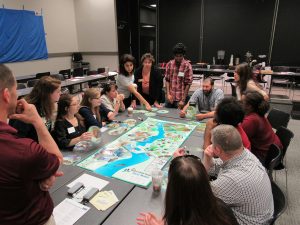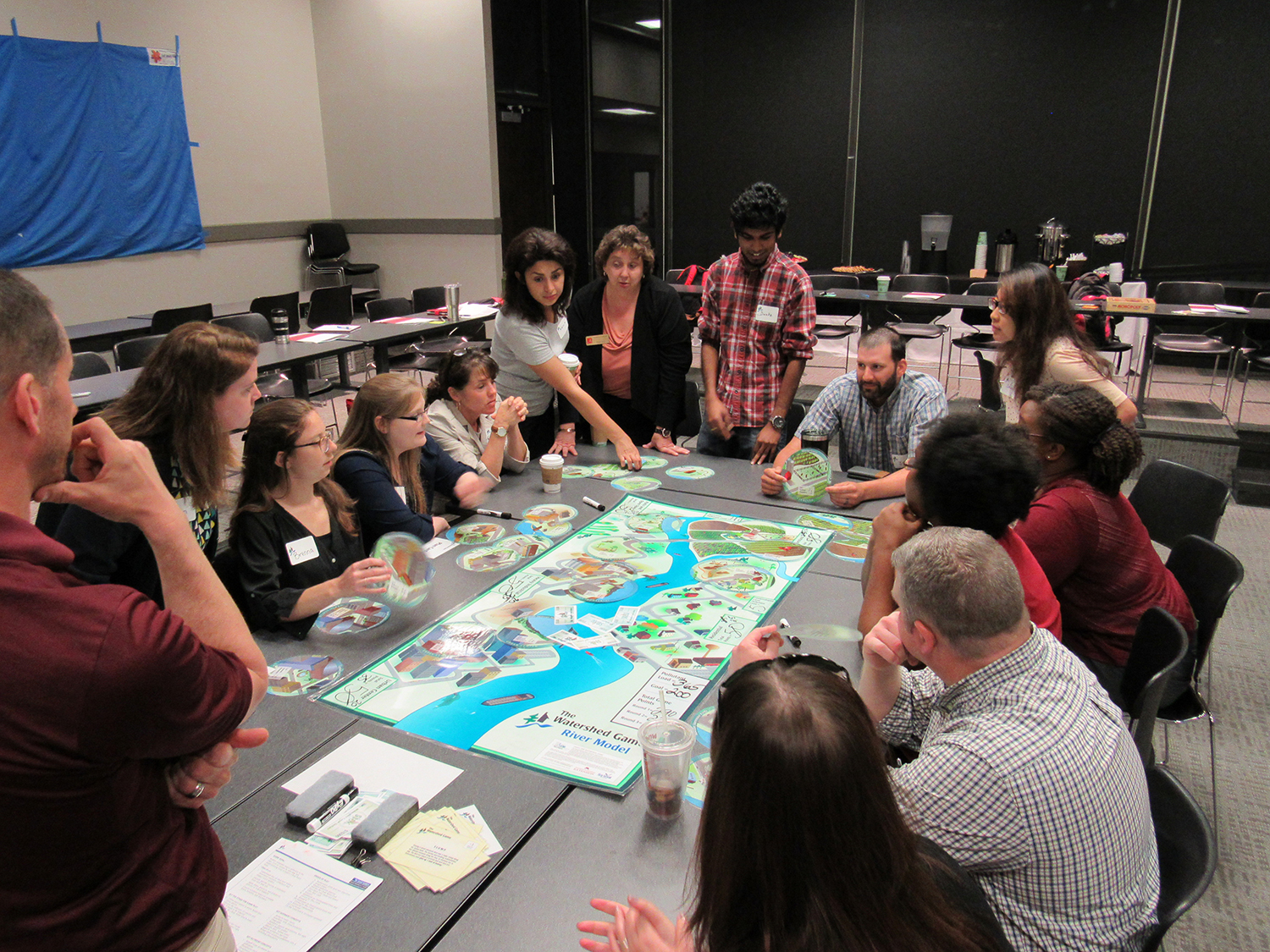By Brock Parker
Board games have long been a staple of entertainment. They are usually played with a group of people, and the goals are roughly the same: win the game by acquiring the most resources or by surviving various challenges.

The Alabama Water Institute at The University of Alabama is taking that a step further by using the Watershed Game to teach people around campus and Tuscaloosa how to win water quality battles in real life.
“We believe bringing tools like this game to the Alabama Water Institute helps faculty train and educate students about the complex nature of watershed management,” said Dr. Patricia Sobecky, executive director of AWI. “It can also be a tremendously useful tool for helping elected leaders in their decision-making and for helping communities work collaboratively when it comes to managing their watersheds.”
Created by Minnesota Sea Grant and University of Minnesota Extension, the Watershed Game is an interactive tool that helps elected and appointed officials, community leaders and other stakeholders understand how critical good water quality is to community and environmental well-being and how important active management is to maintaining a proper balance of community growth and protecting natural resources. In the education realm, faculty members can also use it in their courses. Minnesota Extension educators John Bilotta and Cindy Hagley recently visited UA to train water researchers on how to facilitate the game.
According to Bilotta, many local officials might not have the background to fully understand how changes in land use can alter water quality. Instead of using lectures and literature to educate them, they wanted to make the lessons more memorable.
“We developed the game after years of hearing from the people we work with that they wanted a more interactive way to learn,” Bilotta said.
The Watershed Game for Local Leaders comes in three models: streams, rivers and lakes. Each version is played on a large map that shows various examples of everyday life surrounding each source of water, such as construction, farming and residential areas. The goal of the game is to reduce the overall amount of pollutants, including excess sediment and phosphorous, from entering the water from the surrounding land. Each area has different practices and policies that can help. Players form “land-use teams” and are given a budget that dictates which of the practices they can afford and how many pollutants can be deducted from their area. A team’s budget can be affected by unexpected events and advance planning, which help teach players how to deal with and prepare for external factors in the real world.
“Winning” the game after the third round requires the teams to work together as a watershed community, though they began the game as separate teams. This fosters cooperation and a collective vision among all stakeholders. It also helps them consider a variety of factors in managing clean water while improving the livelihood of local residents, businesses and the ecosystem itself.
The game can also help young students understand the role they can play in managing water quality.
“After repeated requests from classroom teachers, we are excited to report that we now have a classroom version of the game designed for middle school students, but usable with other ages,” said Hagley.
The classroom version is designed for use with a full class, has an electronic scoring component and includes small-group and whole-class play components.
Campus and local groups interested in getting access to and playing the Watershed Game may contact Sobecky at psobecky@ua.edu.
